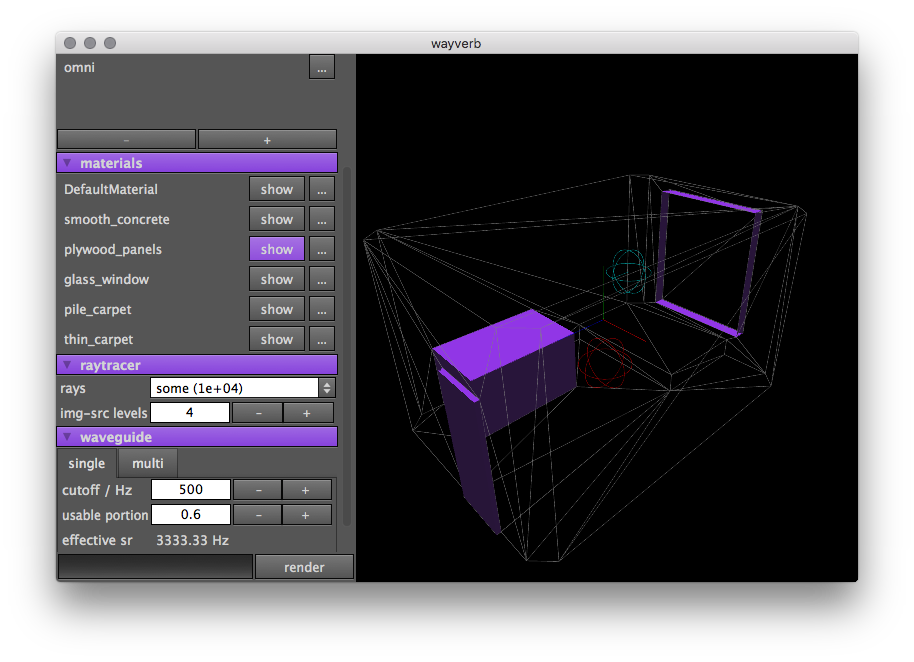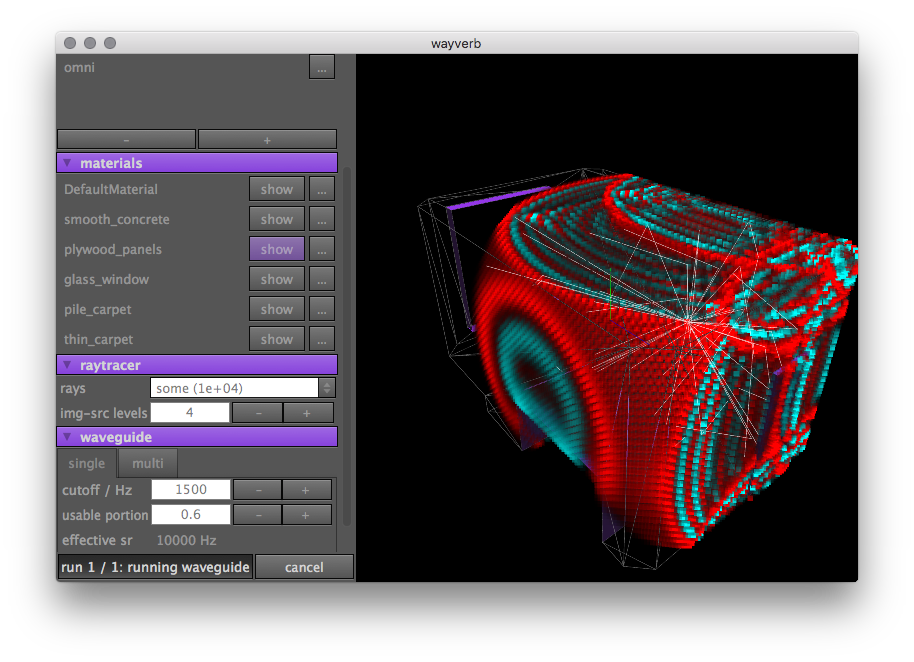What does Wayverb do?
It simulates reverberation: Given a 3D model of a room (perhaps made with Sketchup or AutoCAD), Wayverb allows you to predict the impulse response of that room. Simulations can be customised by adjusting the frequency response of the reflective surfaces, and the source and microphone positions.
Perfect for sound design: Generated impulse responses are intended for use with convolution reverb tools such as Altiverb, for music production and sound design applications. They may also be useful to architects, for checking the acoustic properties of spaces (such as reverb time and speech intelligibility), without having to physically build anything.

